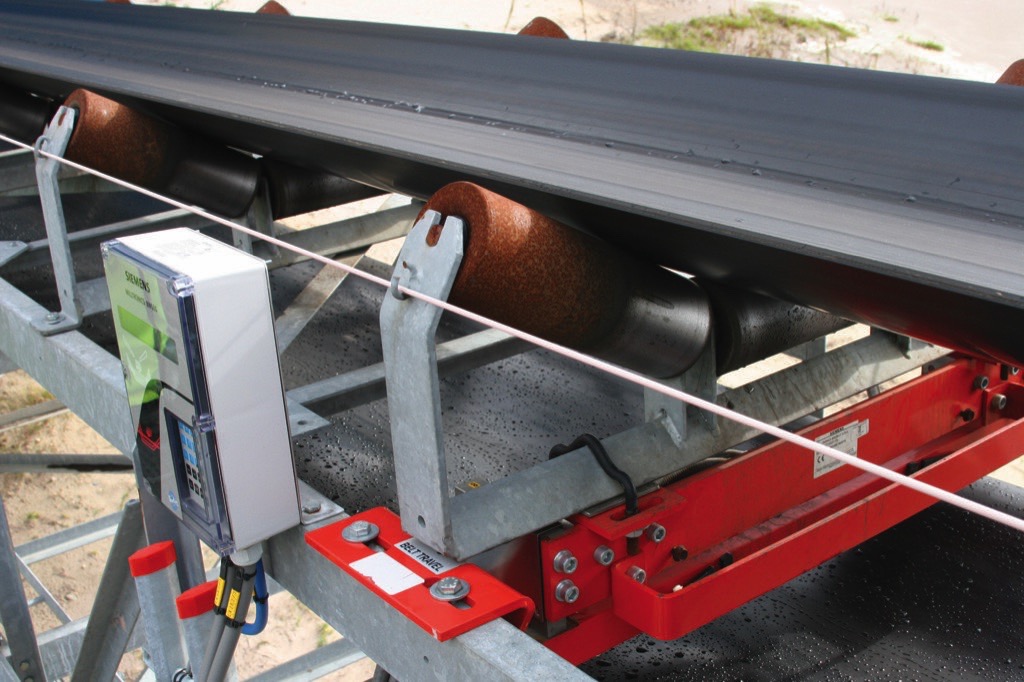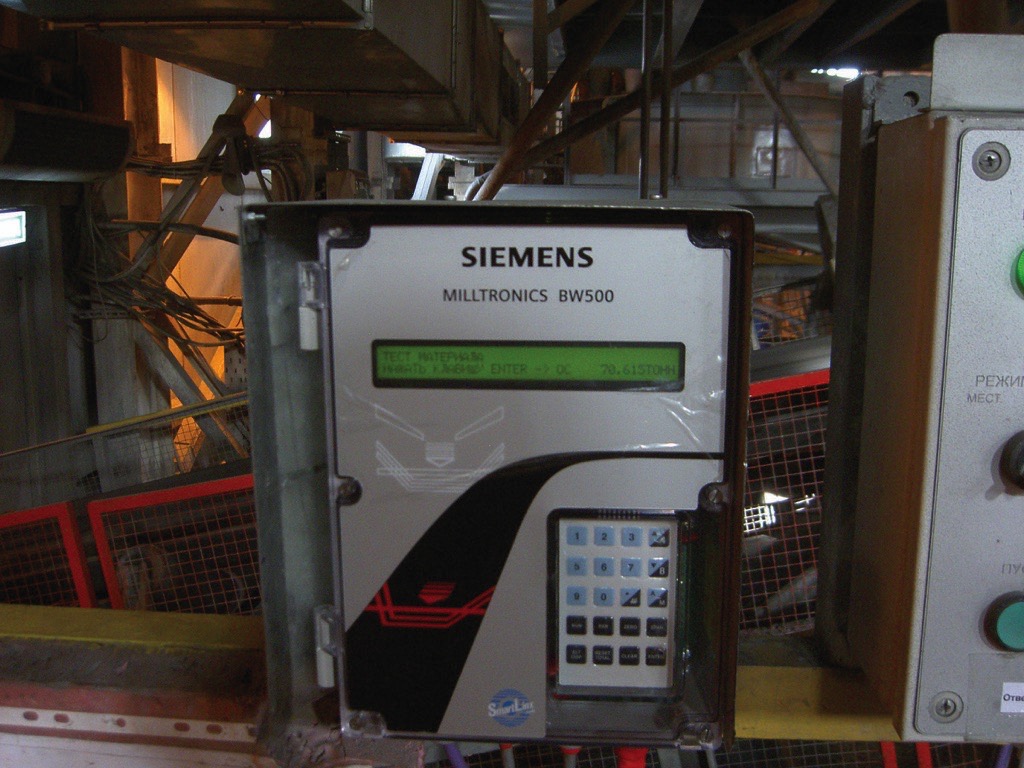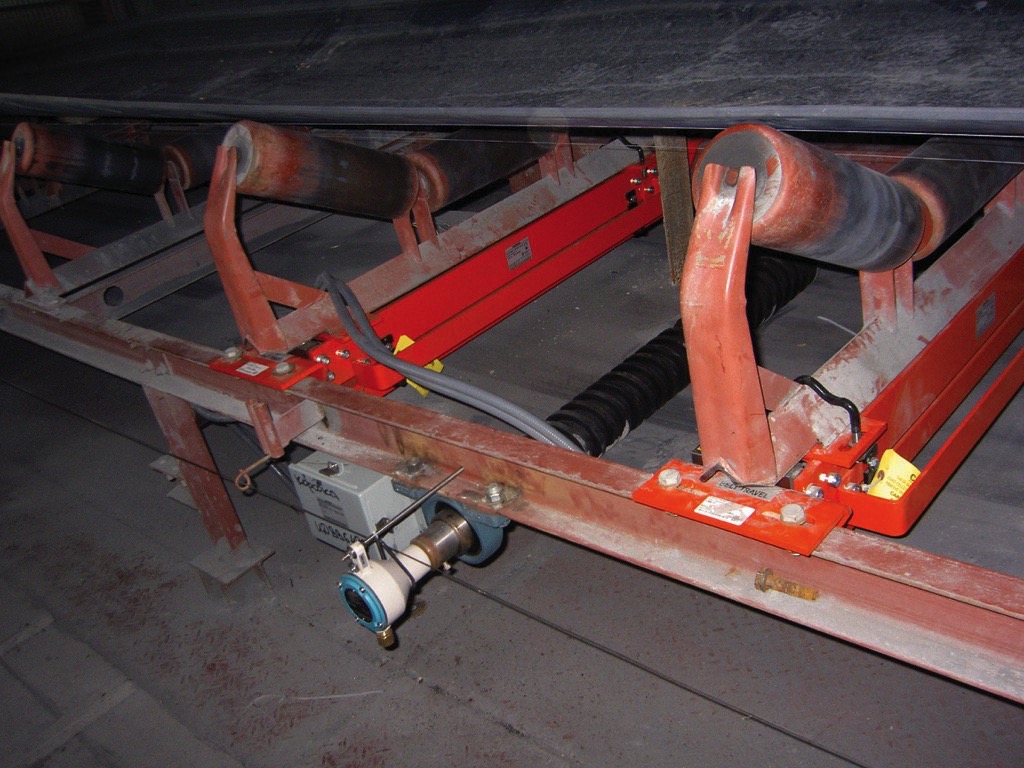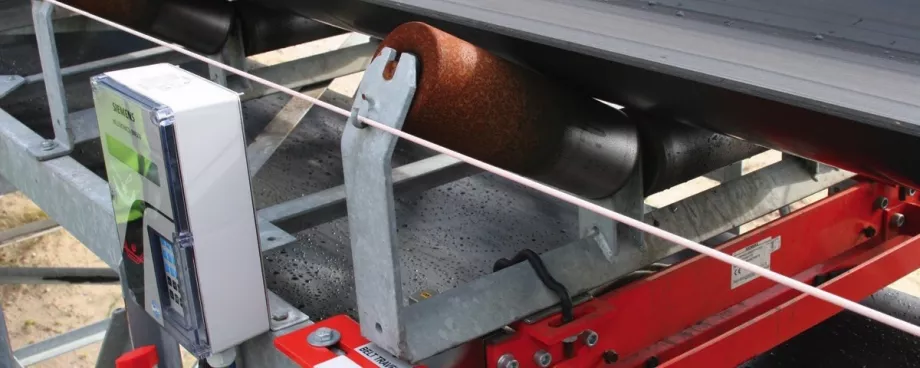(From the archive of ”bulk solids handling", article published in Vol. 35 (2015) No. 4 , ©2015 bulk-online.com)

Named the Best Industrial Scale 2014 in International Weighing Review Readers’ Choice Awards, Siemens Milltronics MSI belt scale is proven in a wide range of applications worldwide. From controlling and totalizing the weight of organic waste to monitoring the flow of extracted gold ore, this belt scale provides a powerful solution to two diverse companies.
Garbage into green Energy
What if you could reduce a time-consuming, complicated task from every other day to once a month? An integrated solid waste management company in India tried just that: Organic waste from the local municipality arrives at the facility and is loaded onto a conveyor. The process involves removing metals and waste other than food scraps, animal waste, and yard materials. This organic waste is then fed into an incinerator as a fuel for electricity generation. Every day, the company processes 100 tons of municipal solid waste, which generates four megawatts of energy.The company uses a belt scale to control and totalize the feed of material. The totalized amounts are used to calculate the price of waste from the city, so the company required accuracy and reliability when weighing the organic waste. However, waste material is difficult to weigh due to light loading, sudden changes in bulk density of the material, and other material handling issues that arise. For example, often material is trapped under the conveyor’s side skirts or falls on the load cells or belt scale, causing errors in measurement.The previous belt scale was not robust enough for the application, as the existing load cells were easily damaged and the trapped material required frequent calibration. Technicians were tending to the belt scale every other day – and even then the unit’s accuracy would drift.
New Way to accurately weigh

The company decided on Siemens belt weighing technology, which includes a MSI belt scale, BW500/L integrator, and SITRANS WS300 speed sensor. Operators installed the belt scale with the assistance of Siemens India weighing experts, who provided advice for the correct location of the scale, ways to avoid trapped material or buildup, and appropriate selection of a product to fit the demanding conditions.The scale was installed on a trial for one month and tested in comparison to independent truck scales to confirm its accuracy. The MSI belt scale has an accuracy of 0.5%, with repeatable results for all of the facility’s waste material measurements.What did the company gain from this Siemens weighing solution?
- Maintenance time savings: Operators now check on the belt scale once a month rather than every other day – this represents a savings of 300 hours every year!
- A rugged belt scale system: The load cells on previous scale systems were mounted outside of the conveyor frame, but this puts them in the line of fire for material spillage. As well, some operators used these load cells as a useful foothold while climbing onto the conveyor to remove blockages, thereby damaging the load cells.
- Local expertise: Siemens India weighing experts helped throughout the entire purchase and installation process. The Milltronics MSI belt scale is now also manufactured locally in India (in addition to its existing Canadian, Chinese, Australian, and South African production), so industry in India has expert instrumentation partners for any support needed.
Weighing Gold per Belt Scale
Rings, watches, necklaces – you’ll see shiny gold jewellery is found in all shapes and sizes. Yet this expensive material starts out like any other mineral: in the ground, dirty, and waiting to be discovered.A precious minerals processing plant in northeastern Russia uses a conveyor to transport gold ore into a ball mill. The site consists of an on-site flotation concentrator and a high-grade refractory gold deposit. The refractory ore is processed by conventional flotation on site. Then the concentrate is shipped to another plant where gold bars will be produced using pressure oxidation and cyanidation technologies.The conveyor has a 1300 mm (51-in) wide belt and runs at 0.64 m/s (2 ft). The gold ore is transported in at a nominal flow rate of 110 t/h (121 sht). A gravimetric tensioner is on the conveyor to ensure a constant belt tension along its 143-m length, with idlers spaced on the conveyor every one meter (3.2 feet).The customer already had a scale installed from a competitor: a full frame four-idler design. Unfortunately the scale was installed in an area that is not desirable for accurate weighing performance near the drive pulley. The reason was due to its size and the fact that the conveyor is curved, limiting the options for installation based on these constraints.The four-idler model was reporting an accuracy above 1% and also experienced issues with temperature influences, producing a significant error at sub-zero temperatures due to deformation of the large frame under the thermal expansion and contraction forces. This was creating erroneous signals on the load cells being measured as product weight.The customer required that the scale met metrological approvals of the Russian GOST Metrological agency. Siemens is one of the few companies in the world that has this approval for its belt scales, and offered a Milltronics MMI belt scale, a combination of two MSI belt scales in tandem. The compact design of the single idler model allowed for quick and easy installation, as well as for lower space requirement. This in turn allowed for a more suitable area in the conveyor to be selected. A Sitrans WS300 speed sensor mounted on a self-cleaning bend pulley, a calibration test chain, and a Milltronics BW500 integrator completed the belt scale system.

The integrator was connected to the plant network via the Profibus DP option, allowing for total integration of the scale into the plant automation system. The Sitrans WS300 also features special electrical circuitry, which eliminates false speed sensor signals from vibration. The bushed calibration test chain is a reliable option for calibration when material tests are not possible to help simulate material being transported on the belt. Siemens recommends the use of test chains on trade-approved applications for this reason.After a fast and headache-free installation and commissioning, monitoring the scale obtained the accuracy to be 0.15%, which more than satisfied the needs of the customer.
| About the Author | |
| Matt MorrisseyProduct Manager Weighing TechnologySiemens AG, Canada |
■




















